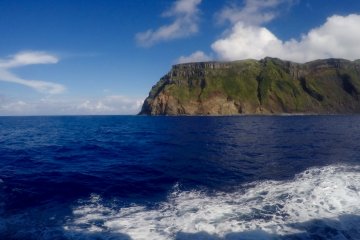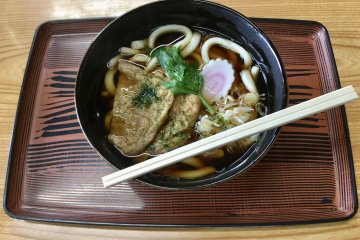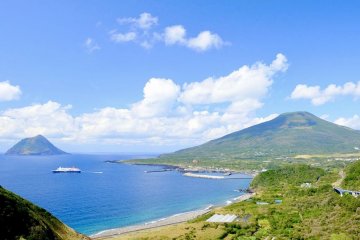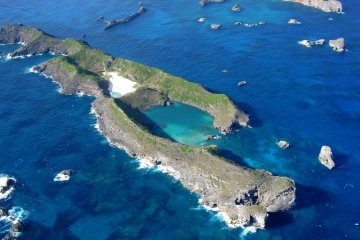When the Japanese zoologist Tsunemi Kubodera first photographed a giant squid alive in its natural habitat on 30 September 2004, he could not have imagined that this unique experience would recur over and over again in the following years.
In fact, two years later he managed to film an even larger specimen with a colleague from the Ogasawara Whale Watching Association, Kubodera managed to capture and photograph a giant squid with his special cameras, after several years of trying to trace the paths of sperm whales. The cameras were mounted on hooks with cuttlefish attached as bait. The squid in question was nicknamed Dana, the most famous member of the Architeuthidae family, as it has been the protagonist of many documentaries. The setting for this adventure were The Ogasawara Islands.
The Ogasawara Islands are an archipelago of over 30 tropical islands, about 1,000 kilometers south of Tokyo. The first visit to the islands took place in 1543 by Europeans, when the Spanish explorer Bernardo de la Torre on the San Juan sighted Haha-jima, which he nicknamed Forfana. At that time the islands were uninhabited, indeed the Japanese first arrived on the islands in 1670 and called them Buninjima 無人 島, literally "the uninhabited islands". Shimaya Ichizaemon, the explorer appointed by the shogunate discovered and brought to Japan several species of trees and birds never seen before, but after his expedition, the shogunate abandoned all plans to develop these remote islands. To date, despite the repeated passing of various Western countries and Japan, the language of the latter is more common. As settlers from the United States, Europe, and other Pacific islands preceded ethnic Japanese residents, an English lexified pidgin that later developed into a Creole, known as Ogasawara Mixed Language, emerged on the islands during the 19th Century. This was the result of the hybridization of Japanese with the English of the island, resulting in a mixed language that is still heard today.
Today the islands are known for ecotourism, pristine beaches and water adventures. The UNESCO World Heritage Sites of Chichijima and Hahajima Islands are the only ones to be inhabited. On the Ogasawara Islands you can enjoy nature with hiking trails, relax on pristine beaches and with a little luck admire the seasonal passage of whales. Chichijima Island, reachable by the Ogasawara-maru ship which leaves from Takeshiba pier, is well known for its beautiful beaches, such as Miyanohama to the north, for snorkeling or swimming around submerged WWII wrecks not far from Sakiura Beach on the east coast. Ogamiyama Park is located in the north of the island next to the Ogamiyama-jinja shrine. The green of the woods, the blue of the ocean and the white of the sand are a perfect backdrop to enjoy and photograph. A short distance away, next to the Futami port, there are most of the restaurants and places where you can taste the local specialties based on sea turtle. One kilometer south of the island is Minamijima, rich in flora and fauna. The island can only be visited by one hundred tourists a day, accompanied by an authorized guide. Don't forget to photograph the green turtles and sea birds that live on the jagged rocks and white beaches.









